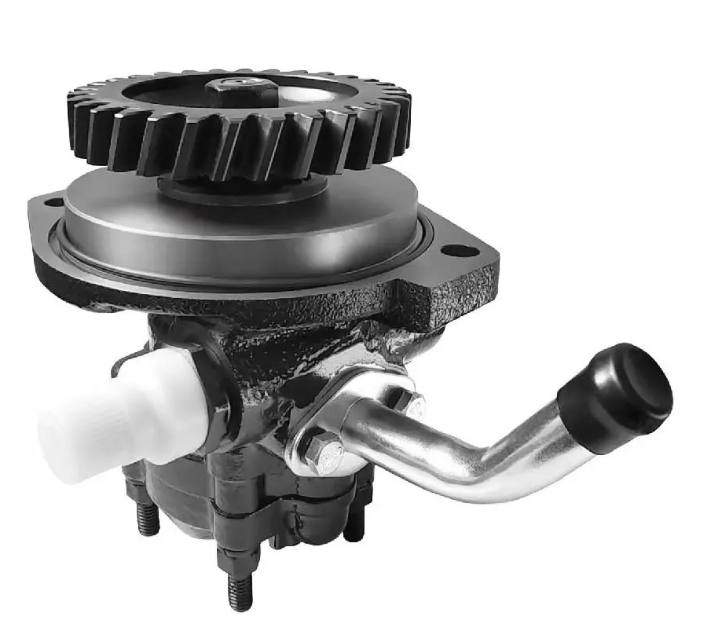
Although most cars currently use electric power steering systems, there are still some cars that use hydraulic power steering systems. The purpose of using a power steering system is to reduce the driver’s steering effort. By improving the corresponding steering characteristics, the steering operation is lighter, but the response when turning is still completed by the driver. The power steering pump is the power source of the power steering system, and hydraulic oil serves as the medium for energy conversion (hydraulic energy is converted into mechanical energy). When the engine is running, the power steering pump is rotated by the crankshaft pulley through the belt to play an auxiliary role. The hydraulic assist system is shown in the figure below.
The hydraulic power steering part of the hydraulic power steering system consists of a steering pump, high-pressure oil pipe, oil return pipe, steering gear, oil volume regulating valve and power cylinder. The mechanical part consists of steering knuckles, tie rods and longitudinal bars. Because the power-assist pump is driven by a V-belt, in order to ensure that the system has a certain pressure, as long as the engine is started, the power-assist system will work regardless of whether we are steering or not. Due to cost and material issues, hydraulic power systems are more commonly used in economy cars. The function of the power pump is to generate high pressure in the steering system, and the high-pressure oil pipe is responsible for transmitting the pressure from the power pump to the oil quantity regulating valve in the steering gear.
The oil regulating valve is installed on the steering gear housing and has a pinion at the end to mate with the rack in the steering gear. The power cylinder is installed in the steering gear and is usually filled with hydraulic oil. The middle of the cylinder is separated by a piston, including two small cylinders with upper and lower volumes. There are three types of boosters: rack and pinion type, recirculating ball type, and worm direct pin type. The rack and pinion type is the most used in automobiles, which can be said to be 100%. Because cars do not require very large torque transmission, small trucks use the recirculating ball type.
The structure and working principle of the power steering pump. The key components of the power steering pump include blades, stator, rotor, safety valve (pressure valve) seal, bearing front cover and rear cover, as shown in the figure below. When the engine is working, the rotation speed of the outer end of the rotor is synchronized with the engine speed, thereby driving the rotor to rotate. The blades are mounted on the stator. When the rotor rotates, the blades expand due to centrifugal force and seal the casing, thereby forming a closed space. Because during the operation of the rotor, the enclosed space undergoes spatial changes from large to small, and from small to large, the pressure acting on the upper and lower power cylinders will cause a pressure difference.
Post time: Jan-23-2024

